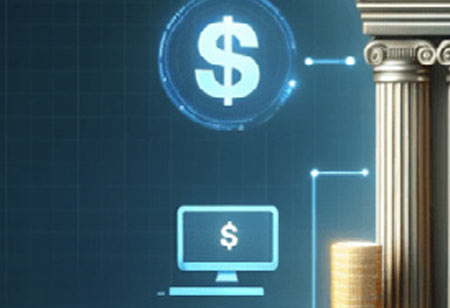THANK YOU FOR SUBSCRIBING

By
Banking CIO Outlook | Monday, August 11, 2025
Stay ahead of the industry with exclusive feature stories on the top companies, expert insights and the latest news delivered straight to your inbox. Subscribe today.
Fremont, CA: In the fast-evolving digital economy, payment and card systems have become integral to consumer and business-to-business transactions. As the global marketplace continues to evolve, the way payments are processed and managed is also changing. However, the challenges arising from these changes can impact businesses, consumers, and even financial institutions alike.
The threat of fraud and cyberattacks in online transactions is increasing, which creates a challenge for the payment and card sector. Card-not-present fraud is a severe challenge to e-commerce. Thus, payment processors and card issuers must invest in advanced security measures such as tokenization, encryption, and multi-factor authentication. Such measures are expensive and complicated, requiring significant upgrades to existing systems.
Interoperability among payments is essential given the myriad payment options available to consumers today, such as credit cards, mobile wallets, and cryptocurrency. Friction can be created without identical technology, eventually leading to cart abandonment or dissatisfaction. So, payment providers must collaborate to achieve a universal standard to ensure smooth transactions and lower barriers for merchants and customers.
The most critical challenge regulatory authorities have to deal with regarding regulating a payment processor and card-issuing institution is the updates issued from time to time to laws that govern payment processing, data protection, and consumer rights. Nonconforming business entities are prosecuted through fines and other law-related problems, which makes it necessary for them to spend more time dealing with compliance matters than innovative concerns. Many organizations in the payment industry are grappling with compliance vs. operational efficiencies.
The rapidly changing consumer expectations add this complexity to payment and card challenges. Today's consumers demand quick, convenient, and flexible payment options that cater to their lifestyles. The rise of contactless payments and mobile wallets reflects this shift as customers seek faster checkout experiences. Businesses must change these evolving preferences by offering different payment types while ensuring their technology does not compromise the ability to process higher volumes of transactions efficiently and safely. Otherwise, they will lose sales and brand loyalty.
Digital currencies, including cryptocurrencies and CBDCs, present opportunities and challenges for the payment industry. There are also some risks and regulatory uncertainties regarding digital currencies. Due to cryptocurrencies' volatility, businesses will refrain from using them. The speed of transactions will be less than the cost in fees, and use without a regulatory framework poses additional complexity. While evolving landscapes for digital currency continue to face the challenges presented to them, payment processing continues to find room.
Infusing technology into the payment system causes tremendous difficulties for small businesses because they have relatively constrained sources and expertise. As larger companies embrace more advanced means of payment, SMEs fear losing customers who opt for more advanced options. Many SMEs need affordable, user-friendly payment options to continue contributing to the economy and meet consumer expectations.
THANK YOU FOR SUBSCRIBING
Be first to read the latest tech news, Industry Leader's Insights, and CIO interviews of medium and large enterprises exclusively from Banking CIO Outlook
I agree We use cookies on this website to enhance your user experience. By clicking any link on this page you are giving your consent for us to set cookies. More info



